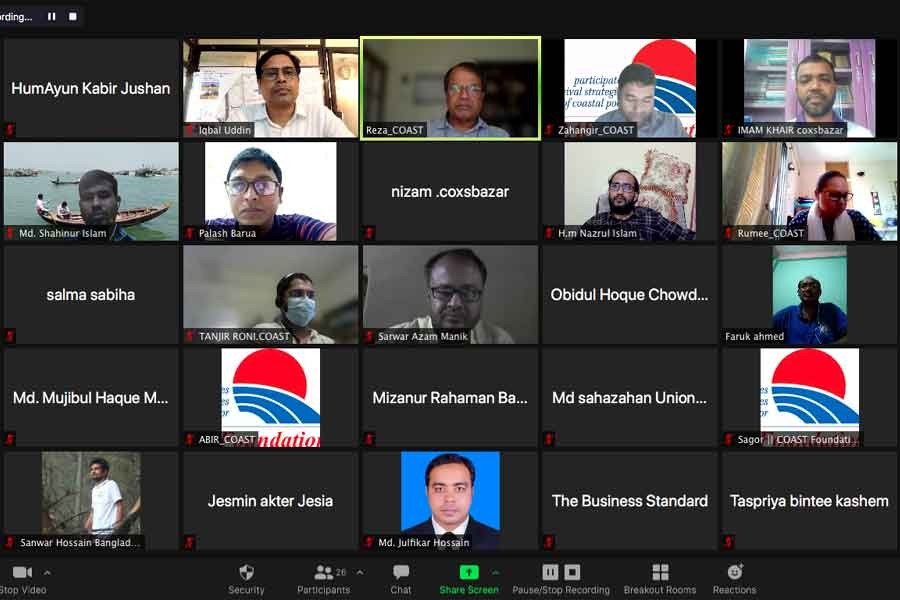Child marriage rate increases in Cox’s Bazar significantly amid pandemic

Published :
Updated :

A recent study on the impact of COVID-19 on child marriage in Cox’s Bazar district has uncovered rates of child marriage soared throughout the district since March 2021, with the highest increase of 82 per cent in Eidgaon Upazila and the second-highest increase of 75 per cent in Ukhiya Upazila.
The study was carried out by the COAST foundation in 32 Union Parishads and 3 municipalities throughout nine Upazilas in the district. COAST foundation conducted the study from 4 August to 26 September 2021 covering all Upazila of Cox's Bazar, reports UNB.
The study findings were presented at a virtual press conference on Saturday. Moderated by Rezaul Karim Chowdhury, Executive Director of COAST Foundation, the findings were presented by Jahangir Alam, Assistant Director of COAST.
In his keynote, Jahangir Alam noted that the trend not only increased in each Upazila under the district but also the high rates of increase. Apart from Eidgaon and Ukhiya, we had Ramu at 72 per cent, Teknaf at 66 per cent, Moheskhali at 61 per cent, Kutubdia at 54 per cent, and Cox’s Bazar Sadar 51 per cent. Only in Chokoria (32 per cent) and Pekua (26 per cent) do they fall below 50 per cent.
In another presentation on the multidimensional impact of child marriage, Md. Mujibul Haque Munir, Joint Director of the same organisation, said due to such high rates of child marriage, the birth rate in Bangladesh is highest in South Asia. Child marriage eats up 9 per cent of women's income and 1 per cent of national income. Eliminating child marriage by 2030 could save 11 per cent of our educational budget, he said.
The study covered 384 families as a sample by which they or their close relatives had been involved in at least one child marriage during 2020 and 2021. Among the respondents, the child marriages they were involved in consisted of girls 63 per cent and boys 37 per cent.
Asked about the reasons why child marriage had increased, 63 per cent of respondents said child marriage rates increased during this COVID period. Some 47 per cent said the closure of schools, which was also due to the pandemic, was the main reason for increasing child marriage rates. The third-biggest reason to emerge from the survey with 26 per cent was the economic crisis triggered by Covid-19, and the fourth with 22 per cent was to have become unemployed, leading to economic insecurity.
The study also found generational education to be a check against child marriage. So the child marriage rate was only 5 per cent in families whose heads had completed higher secondary education. The rate jumped to 35 per cent among families whose heads had not completed higher secondary education, and soared beyond 50 per cent 52 per cent among families with no formal education, even if they could sign their name.
The link to poverty is also established, as the rate of child marriage was by far the highest (64 per cent) in low-income families. It almost exactly halved (32 per cent) in the middle-income families, and dropped to just 4 per cent in the well-off segment.
While commenting on the prevention of child marriage in their community, choosing multiple answers, 65 per cent of respondents said, stopping fake birth registration is the key to prevent child marriage. Some 64 per cent said, the opening of schools is the key, which has already opened, 38 per cent said effective implementation of law and order, and 32 per cent said financial support to the kids’ families vulnerable to child marriage and raising awareness to the community will help reduce child marriage.


 For all latest news, follow The Financial Express Google News channel.
For all latest news, follow The Financial Express Google News channel.